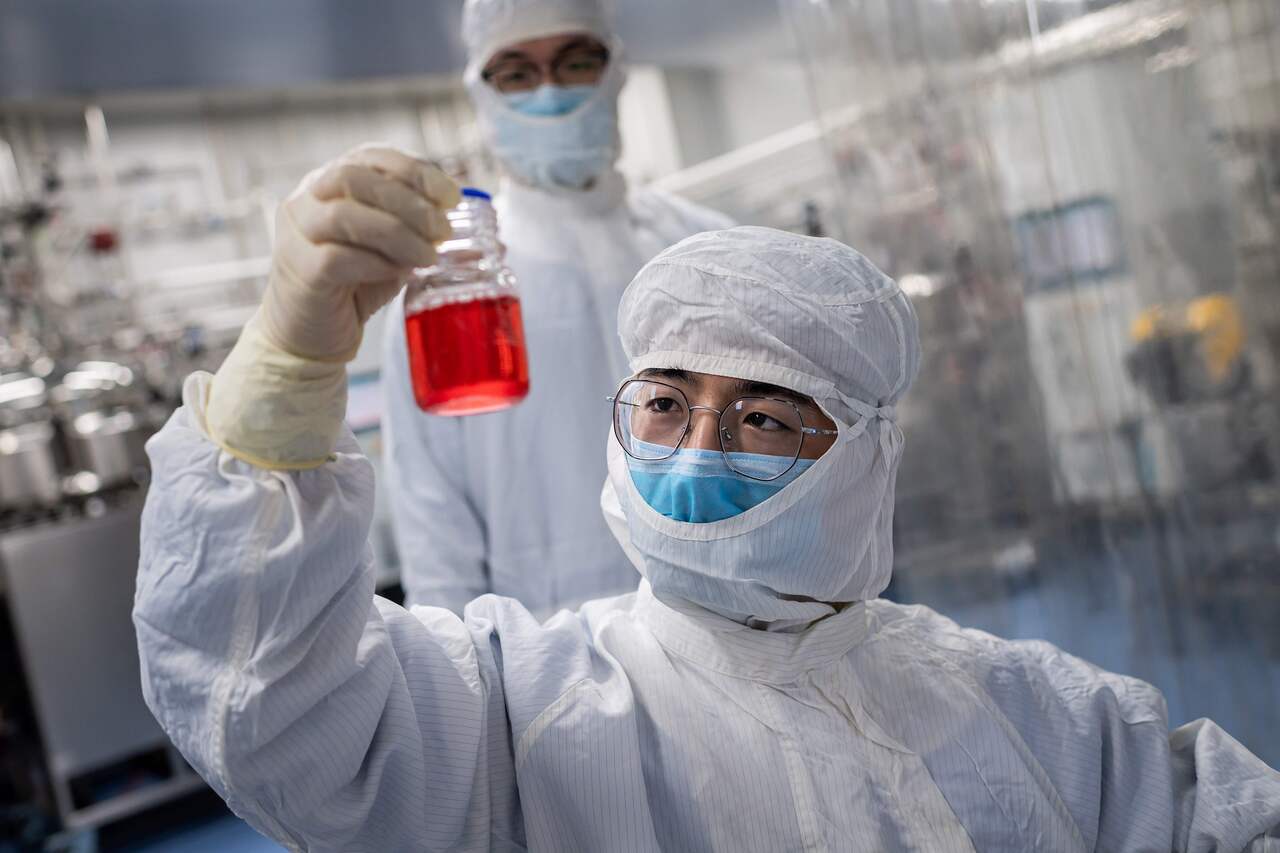Covid-19: The first 100 days in S'pore
Developing tests to diagnose Covid-19 in minutes
Sign up now: Get ST's newsletters delivered to your inbox

An engineer makes a test on an experimental vaccine for the Covid-19 coronavirus in Beijing, on April 29, 2020.
PHOTO: AFP
Follow topic:
In an outbreak of an infectious disease like Covid-19, diagnosing patients is a key first step to preventing its spread. Identifying infected patients allows doctors to quickly ring-fence them, so they do not spread the virus to others while they are being treated.
The current "gold standard" method using polymerase chain reaction (PCR) technology detects the presence of viral genetic material in patient samples, but it is time-consuming and technical, since it involves expensive machinery that also requires trained technicians to operate.
Now, at least two research groups in Singapore are working on speeding up this process with test kits that can show results in minutes, instead of the current day-long wait for PCR test results.
One test being developed by researchers at the Nanyang Technological University (NTU) and Singapore-MIT Alliance for Research and Technology (Smart) could even be as fuss-free as a pregnancy test kit, yielding results in 10 minutes.
Their test kit is made of paper coated with molecules that "recognise" Sars-CoV-2 - the virus that causes Covid-19 - proteins in a clinical sample. If the viral proteins are detected, the paper strip changes from white to blue.
A key difference between this work-in-progress test and the PCR test is the part of the virus that is being detected, explains research team member, Professor Peter Preiser, associate vice-president for biomedical and life sciences at NTU. Sars-CoV-2 comprises a single-stranded genetic material known as RNA, as well as proteins.
"The PCR test detects the RNA of the virus. The test we are working on detects proteins of the virus."
The principle behind this test, he explains, is to use the coated paper to capture all the viral proteins in a sample and then detect this captured protein via a visual read-out.
This may sound simple in theory but plenty of research went into it.
First, scientists developed molecules that could be very specific about "recognising" the viral proteins, so that false positives did not occur due to other proteins in blood or other samples.
They also identified molecules that could be used to flag the viral proteins that are captured, which causes the test kit to change colour. This is no easy feat because the viral proteins are scarce and vastly outnumbered by the other kinds of proteins in clinical samples, making accurate testing quite challenging.
Prof Preiser says: "Finally, there is the requirement to put this all together into the simplest possible device that can be easily deployed for testing of a large number of samples."
He adds that the development of the rapid diagnostic test kit had harnessed the efforts of many scientists, such as Associate Professor Hadley Sikes and her team at the Massachusetts Institute of Technology (MIT), and Dr Patthara Kongsuphol from Smart - MIT's research enterprise here.
He says: "We have now pooled all our expertise and resources to deliver a diagnostic device that ultimately is better, more reliable and cheaper than the current approaches."
The test has already been tested and validated in laboratory settings. The next step, say the researchers, is to perform these tests with clinical samples to determine the sensitivity and specificity.

Separately, another research team led by Assistant Professor Tan Meng How from the NTU School of Chemical and Biomedical Engineering is also working on a point-of-care diagnostic test kit that could yield results in 20 to 30 minutes.
Like PCR test kits, the one being developed by Prof Tan and his team recognise the viral RNA.
But instead of using a PCR machine to highlight the presence of the virus, the test being developed makes use of a gene-editing tool known to scientists as Crispr-Cas.
This tool essentially works like a pair of "molecular scissors", says Prof Tan. "It can be programmed to cut a specific part of the viral RNA unique to Sars-CoV-2."
The virus RNA is essentially made up of an "alphabet" of molecules known as nucleotides. The way this "alphabet" is ordered is unique to the virus, differentiating it from other types of viruses.
Once the molecular scissors detects a specific segment of the viral RNA and snips it off from the rest of the viral genome, it becomes hyperactivated and starts to randomly cut snippets from other detectable genetic material in the sample.
This trait was crucial for the scientists. It enabled them to put in a molecule that would start to glow only if its genetic "off" switch, which regulates gene expression, was snipped off. Prof Tan says: "If a fluorescent signal is detected, it indicates the presence of the virus. If not, it means the virus is not present to cause the hyperactivation of the molecular scissors."
He adds that the test works in a laboratory setting with synthesised strains of the virus, but the next step is to obtain real patient samples to validate the test.
"To me, this is like national service. If we have a technology in hand that can potentially help curb disease transmission, then we really have to try it."

